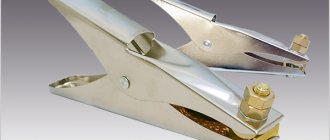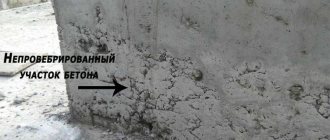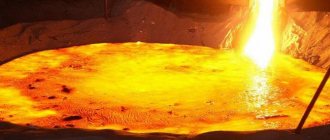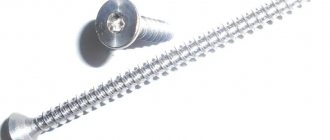Horizontal steel tanks PGS are designed for receiving, storing and distributing various types of liquids with a density of up to 1300 kg/m3 - fuels and lubricants, petroleum products, chemical solutions, food products, drinking and industrial water. The maximum permissible pressure inside the housing is 0.07 MPa (filling), the ambient temperature range is from -60C to +95C. The design, manufacture, installation and operation of the DGS are standardized by GOCT 170З2-2010, GOCT P З4З47-2017, OCT 26 291-94, GOCT 15150-69.
Specific gravity of 1 m3 of concrete by grade
Weight of 1 m3 of concrete M200, M300, M400, M500 Concrete grade Liquid (kg) Dry (kg)
| M100 | 2366 | 2180 |
| M150 | 2360 | 2181 |
| M200 | 2362 | 2182 |
| M300 | 2358 | 2183 |
| M400 | 2350 | 2170 |
| M500 | 2355 | 2180 |
The mass of a cubic meter of concrete grades M100 - M500, indicated in the table, corresponds to the proportions and preparation technology in accordance with GOST 23464-79. As can be seen from the table, different grades of concrete differ in weight, but on the scale of construction, when hundreds of cubic meters of concrete are used, the difference in weight can be neglected. For ease of calculations, professional builders, engineers and private developers use a mass of 1 m3 equal to 2400 kilograms for all grades of concrete.
The weight of special types of concrete is taken from the table:
Type of concrete, aggregateSpecific gravity of 1 m3, kg
| Reinforced concrete | 2500 |
| Concrete on gravel or crushed stone | 2400 |
| Tufobeton | 1200-1600 |
| Pumice concrete | 800-1600 |
| Concrete on volcanic slag | 800-1600 |
| Expanded clay concrete on expanded clay sand, expanded clay foam concrete | 500-1800 |
| Expanded clay concrete on quartz sand | 800-1200 |
| Expanded clay concrete on perlite sand | 800-1000 |
| Shungizite concrete | 100-1400 |
| Perlite concrete | 600-1200 |
| Slag pumice concrete (thermosite concrete) | 1000-1800 |
| Slag pumice foam concrete and slag pumice gas concrete | 800-1600 |
| Concrete based on granulated blast furnace slag | 1200-1800 |
| Aggloporite concrete on boiler (fuel) slags | 1000-1800 |
| Concrete on ash gravel | 1000-1400 |
| Gas-ash concrete and foam-ash concrete | 800-1200 |
| Aerated concrete, foam concrete, gas silicate and foam silicate | 300-1000 |
| Vermiculite concrete | 300-800 |
Quality requirements
Each tank undergoes quality control in production by the OTK department. The tightness of steel tanks, the density of welds, the quality of the metal surface, and the uniformity of application of the anti-corrosion coating are checked.
The quality of the surface and protective coating is determined visually without the use of special equipment. The strength and density of welded joints is assessed based on the results of non-destructive testing methods. These are radiation and ultrasonic testing, a magnetographic method, a color or magnetic particle flaw detection method.
The impermeability of tanks is checked by conducting pneumatic and hydraulic tests. The pneumatic method involves pumping air into the tank body. All welds are pre-wetted with kerosene. The tightness of the container is indicated by the absence of air bubbles and pressure drops inside the housing. Hydrotests are carried out in the following way - the container is filled with water to its entire volume and kept for a certain time. The absence of leaks confirms the tightness of the tank.
Construction of horizontal tanks
Structurally, the RGS is a cylindrical steel container with flat, cone-shaped or hemispherical ends. The tank is installed horizontally on supporting structures on a prepared reinforced concrete base.
Drawing. RGS scheme.
Technical characteristics of the RGS.
| Options | Values |
| Operating pressure | pouring |
| Temperature range of stored product | from 0C to +90C |
| Minimum ambient temperature | -60C |
| Estimated service life | 10 years |
| Seismicity of the operating area | 6 points on a 12-point scale |
| RGS group according to OCT 26291-94 | 5a |
| Type of product stored | toxic, explosive, fire hazardous, hazard class IV according to GOCT 12.1007-76 |
| Type of medium in the heat exchanger | non-toxic, explosion-proof, fireproof liquid or steam-water mixture |
Main and auxiliary structural elements:
● Housing. For the manufacture of the cylindrical wall and ends of the container, rolled sheet metal from structural steels is used, which can be welded without restrictions. Sheet thickness from 4.0 to 12.0 mm.
● Support elements. The stability of the horizontal tank is ensured by saddle supports with a coverage angle of up to 180 degrees.
● Rigidity elements. Spatial rigidity of the structure is ensured by diaphragms made of angle steel or intermediate rings. The stiffening elements are located inside the body at an equal distance from each other.
● Necks with hatches. For access to the inside of the housing for maintenance and repair, there are openings equipped with hatches.
● Instrumentation and control systems. Safe and uninterrupted operation of the DGS is ensured by devices and devices - alarms, level, pressure and temperature sensors, breathing valves, firecrackers, equipment for unloading and loading operations, and a grounding system.
● Auxiliary equipment. The delivery set of horizontal tanks includes ladders, service platforms with fences, and mounting loops for slinging.
Tanks intended for operation in areas with an average daily temperature below -60C are manufactured with external thermal insulation and/or a heating system. To maintain a given temperature regime, the body is covered with 50 mm thick mineral wool and sheathed with thin-sheet galvanized steel.
Heating of tanks is carried out in three ways:
● First option. Installation of a sectional heater or tubular coil through which the coolant circulates.
● Second option. Heating self-regulating electrical cable, which is mounted on the outer wall of the housing. The height and pitch of the cable winding depends on the characteristics of the stored product, operating conditions, case diameter and material design.
● Third option. Installation of a heat exchange jacket, inside which the coolant circulates, ensures heating or cooling of the tank.
Basic equipment of single-wall above-ground tanks RGS.
| Node name | D, mm | Qty |
| Breathing valve SMDK-50 (SMDK-100) | 50 (100) | 1 |
| Measuring hatch L3-150 (L3-80) | 150 (80) | 1 |
| Control mechanism for firecrackers MUV-80 | 80 | 1-2 |
| Khlopushka XP-80 | 80 | 1-2 |
| Luke | 600 | 1 |
| Inlet and outlet pipes | 80 | 1-2 |
| Drain plug | 50 | 1 |
| Hole for mounting a heater | 50 | 0-1 |
| Ladder | — | 1 |
| Luke | 400 | 1 |
| Mounting hole for breathing valve | 50 | 1 |
| Technological site | 400 | 1 |
| Gate valve Z0KCH70BP | 80 | 1-2 |
Design options
Based on the standard design of a ground-based reservoir RGSN, the following tanks are designed:
● For underground installation (RGSP). Reservoirs are manufactured with necks of increased length. The tank is installed in a pit below the soil freezing level with anchoring to the reinforced concrete base with chains, ropes, and belts.
● With double wall (RGSD). Double-walled tanks have a “glass in a glass” appearance, when the outer shell exactly follows the shape of the tank. A damping liquid or inert gas is pumped into the space between the walls. This design eliminates spillage of the stored product and minimizes the risk of environmental contamination in the event of mechanical damage to the outer shell.
● Multi-chamber tanks. For simultaneous storage of several types of products in one tank, above-ground and underground, single-walled and double-walled tanks are designed as two-, three- or multi-chamber. The internal space of the case is divided into compartments by sealed partitions. The number of necks, hatches, inlet and outlet pipes, and instrumentation devices corresponds to the number of internal chambers.
Standard equipment for RGSP and RGSD.
| Node name | D, mm | Qty |
| Technological hatch | 600 | 1 |
| Well (1100x1600x1200) | — | 1 |
| Reception pipe | 80 | 1 |
| Dispensing pipe | 40 (80) | 1-4 |
| Installation of a deaeration line | 50 | 1 |
| Produced water removal line | 40 | 1 |
| Installation for recycling equipment | 50 | 1 |
| Connection for manual level gauge | 150 (80) | 1 |
| Fitting for level gauge “Struna-M” | 200 | 1 |
| Plug for PMP | — | 1 |
| Internal staircase | — | 1 |
| Saddle supports | — | 2-4 |
| Breathing valve SMDK-50 (SMDK-100) | 50 (100) | 1 |
| Fire arrestor PP-100 | 100 | 1 |
| Measuring hatch L3-150 | 150 (80) | 1 |
| Valve for collecting stored product KP-40 | 40 | 1-4 |
| Level indicator sensor PMP-066 | — | 1 |
| Pressure and vacuum gauge MBPZ-U | — | 1 |
| Plug-stuffing valve Du-50 | 50 | 1 |
| Maintenance hatch | Z50 | 0-1 |
| Expansion tank | — | 1 |
| Antifreeze pipe | 15 | 1 |
| Signaling device MC-P-4BU-U-1I-G | — | 1 |
Weight of concrete by grade
To figure out how much 1 cube of concrete weighs, you need to take into account its recipe. The weight parameters can be influenced by the type of aggregate, the size of additive granules, the volume of water, and the quality of mixing. In accordance with these parameters, building materials are divided into grades that characterize its strength and purpose. Let's give an example with two brands and their components.
| Brand | Water, l | Cement, kg | Crushed stone, kg | Sand, kg |
| M100 | 100 | 214 (M300) | 1440 | 870 |
| M200 | 140 | 286 (M400) | 1440 | 795 |
Any deviations of the formula in one direction or another can increase or decrease the specific gravity of concrete in 1 m³, and also affect its strength. If, suppose, for M200 concrete we take M300 cement in the amount of 350 kg, increase the volume of water to 175 liters, and reduce the mass of crushed stone to 1080 kg, then we can reduce the weight of the solution and increase its strength characteristics.
Often, when changing the number of components, unpredictable results are obtained, so experts advise sticking to the generally accepted ratio of components. It is optimal to buy ready-made mixtures made in pre-calculated proportions. In such a situation, you can clearly calculate the weight of 1 m³ of concrete and select the appropriate grade according to the type of work being carried out.
When calculating, special attention should be paid to the aggregate. Below we give the approximate weight of building materials with additives.
| Concrete by type of aggregate | Specific gravity, kg per cubic meter |
| Pumice concrete | 800–1600 |
| Concrete with perlite | 600–1200 |
| Reinforced concrete | 2500 |
| Concrete on tuff | 1200–1600 |
| Concrete with gravel | 2400 |
| Expanded clay concrete with quartz sand | 800–1200 |
| Vermiculite concrete | 300–800 |
Weight of dry and wet concrete
This table shows how much 1 cubic meter of concrete weighs in liquid and dry states.
| Cement brand | Liquid state (t/m³) | Dry condition (t/m³) |
| M100 | 2 366 | 2 180 |
| M150 | 2 360 | 2 181 |
| M200 | 2 362 | 2 182 |
| M300 | 2 358 | 2 183 |
| M400 | 2 350 | 2 170 |
| M500 | 2 355 | 2 180 |
How much does metal weigh?
Specific gravity of metals in kilograms and tons.
| Metal | Weight of a cube (cubic meter), kg. | Weight of a cube (cubic meter), t. |
| Aluminum | 2689 | 2,689 |
| Tungsten | 19350 | 19,35 |
| Graphite | 1900-2300 | 1,9-2,3 |
| Iron | 7874 | 7,874 |
| Gold | 19320 | 19,32 |
| Potassium | 862 | 0,862 |
| Calcium | 1550 | 1,55 |
| Cobalt | 8900 | 8,90 |
| Lithium | 534 | 0,534 |
| Magnesium | 1738 | 1,738 |
| Copper | 8960 | 8,96 |
| Sodium | 971 | 0,971 |
| Nickel | 8910 | 8,91 |
| Tin (white) | 7290 | 7,29 |
| Platinum | 21450 | 21,45 |
| Plutonium | 19250 | 19,25 |
| Lead | 11336 | 11,336 |
| Silver | 10500 | 10,50 |
| Titanium | 4505 | 4,505 |
| Uranus | 19040 | 19,04 |
| Chromium | 7180 | 7,18 |
| Cesium | 1873 | 1,873 |
| Zirconium | 6450 | 6,45 |
Specific gravity of alloys in kilograms and tons.
Source










